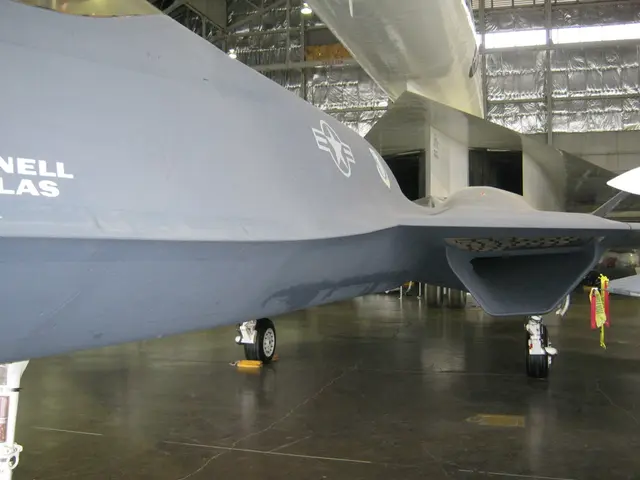Guiding Your Way to a Radar-Assisted Landing: Mastering Radar-Controlled Approaches
In the world of aviation, safety and precision are paramount, especially during landings. One such technique that offers a high degree of control, even under low visibility conditions, is the Precision Approach Radar (PAR) approach. Here's a step-by-step guide on how to fly a PAR approach.
1. **Initial Contact and Request for PAR Approach** After establishing communication with Approach Control, the pilot requests a PAR approach. The controller confirms and provides initial descent instructions and QFE (local pressure setting) as needed.
2. **Radar Vectors to Final Approach** Using both surveillance and precision radar, the controller provides radar vectors to guide the aircraft to the correct position aligned with the runway centerline and glidepath. These vectors help the pilot to establish on the final approach course at a specified altitude.
3. **Precision Guidance by Controller** As the aircraft nears the final approach, the controller provides continuous azimuth (left-right) and elevation (glidepath - up-down) guidance via radio transmissions. The controller gives specific instructions such as “slight left,” “slight right,” “left turn,” “on glidepath,” “slightly above glidepath,” or “slightly below glidepath” to precisely align the aircraft for landing.
4. **Monitoring Descent and Alignment** The pilot continuously adjusts heading and altitude to maintain the guidance provided by Approach Control to remain on the correct glidepath and runway centerline until the runway visual environment is established.
5. **Landing or Missed Approach** Once the runway is in sight and all parameters are stable, the pilot continues the landing manually. If visual contact is not made or the approach becomes unstable, the pilot executes the missed approach procedure as cleared by ATC.
PAR approaches are a valuable skill for pilots to master, as they provide a level of precision similar to the Instrument Landing System (ILS). They can be found in various aviation resources such as the TPP booklet, Jeppesen EFB, or ForeFlight EFB under the "approaches" category.
Before flying any radar approach, it's essential to brief lost-comm procedures with ATC to ensure you have a clear understanding of their expectations. As the Pilot-in-Command, it's your responsibility to determine that the approach and landing minimums listed are appropriate for weather conditions.
In summary, a PAR approach is a radar-based precision approach where the controller provides continuous verbal guidance using radar data on both azimuth and glidepath to the pilot, who follows these timely instructions to safely land the aircraft. Mastering this technique can significantly enhance your aviation skills and ensure a safer flying experience.
- **Understanding PAR Approach Regulations** Pilots should familiarize themselves with the FAAs guidelines and regulations for PAR approaches, which help maintain safety and standards within the aerospace industry.
- **Instrument Training and Ability** Adequate knowledge and proficiency in instrument flight rules (IFR) and flight procedures, including navigation by data and cloud computing technology, are crucial for successfully executing a PAR approach.
- **Cockpit Preparation and Checks** Before initiating a PAR approach, the pilot must ensure that the aircrafts navigation and communication systems are fully functional and set to the appropriate IFR frequency (IFR ALT), such as 118.0 MHz or the assigned ATC communication frequency.
- **Understanding Weather Conditions** The pilot must be aware of the current weather conditions, as PAR approaches are typically employed in low visibility situations. Weather reports and forecasts should be consulted to ensure safe flight operations.
- **Aerospace Industry's Focus on Safety** The aviation industry continues to invest in advancements in technology, aiming to improve safety, efficiency, and accuracy in PAR approaches and other aspects of flight.
- **Flight Failure and Emergency Procedures** In the unfortunate event of a malfunction or emergency during a PAR approach, the pilot must be prepared to follow established emergency procedures and quickly regain control of the aircraft.
- **Pilot Training and Recurrency** Professional pilots undergo continual training to maintain their skills and learn new techniques, focusing on enhancing their abilities to safely navigate a PAR approach.
- **Financial Benefits of PAR Approaches** Implementing PAR approaches in airline operations may offer financial benefits by reducing fuel consumption and reducing the need for circling approaches in congested airspace.







